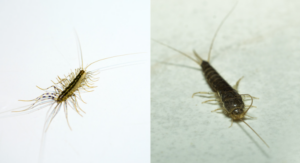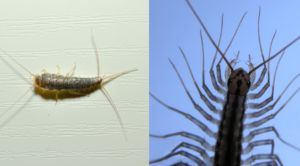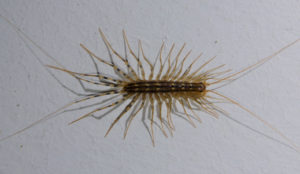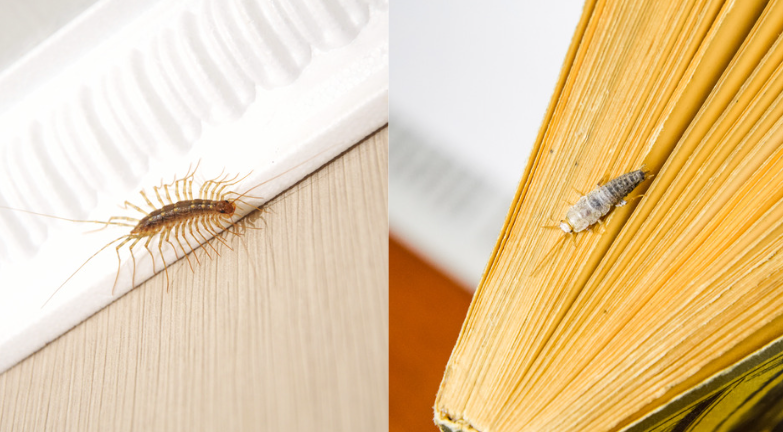Finding a long, skinny bug scuttling across the floor is one of the few things that gives homeowners the creeps. Centipedes and silverfish might be particularly unsettling due to their peculiar appearance. Although silverfish and house centipedes have many characteristics, you should be aware of several important distinctions between the two pests.
House Centipede vs Silverfish – Key Differences you need to Know
Appearance

Due to their similar appearances, centipedes and silverfish are commonly confused, which is one of the main causes. However, despite their similarities, if you pay close attention and know what to look for, you can easily distinguish between a centipede and a silverfish.
Silverfish are much smaller than centipedes. Silverfish bodies are typically barely half an inch long, whereas centipede bodies can reach 1.5 inches.
Centipedes often have a yellowish-brown colour and have darker brown bands running vertically down their bodies. Silverfish can be lustrous and often range from light to dark grey, with no apparent bands or stripes.
Centipedes have many more sets of legs than silverfish, which only have three. The ordinary house centipede has sixteen pairs of legs, one for each body segment, though the number varies from species to species.
Behaviour

It is well known that these two domestic pests prefer damp, gloomy settings. In addition to moving very swiftly, house centipedes and silverfish vary from one another in a variety of other ways.
Centipedes consume other house and garden insects because they are carnivorous. Even some types of spiders and cockroaches are consumed by centipedes. The presence of other pests in or around the home is usually the cause of an increase in centipede activity.
In contrast, silverfish consume a diet high in sugars and starches in natural fibres. Since they like to consume paper and fabrics, silverfish may be a real annoyance.
Is it dangerous to have silverfish and centipedes around is one of the most frequently asked questions. Centipedes can bite, albeit it is not very common. Centipede bites may be quite painful and frequently resemble bee stings. On the other hand, silverfish don’t sting or bite.
Silverfish and house centipedes both prefer certain types of environments, such as attics, closets, crawl spaces, and basements with high humidity are the places they prefer to be in the dark.
How to Get Rid of Centipedes and Silverfish?

Although boric acid and diatomaceous earth are enticing DIY methods, they are less effective for centipedes and silverfish since they require direct contact with the bug. In addition, centipedes and silverfish are challenging to cure because they swiftly flee if threatened and hide in even the slightest cracks. Therefore, an exterminator should be consulted if you have a centipede or silverfish infestation to determine the best action.
Conclusion
The above-listed are the main differences between house centipedes and silverfish. I hope the article will help distinguish them. It is not advisable for a commoner to try pest chemicals or unknown pest control methods; if you cannot avoid pest infestations in your place, contact a professional pest control service.






